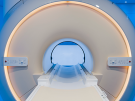Microbiological diagnoses and clinical outcomes for acute hematogenous osteomyelitis

Acute hematogenous osteomyelitis is an infection that occurs in the bone and is most commonly caused by the pathogen Staphylococcus aureus.
Hospital length of stay (LOS) was shorter and odds of receiving three or more unique antibiotics for acute hematogenous osteomyelitis (AHO) was lower in culture-negative patients versus culture-positive patients, according to findings presented by researchers at Children’s National Hospital. The data was presented as part of a poster presentation at the ID Week 2022 conference.
AHO is an infection that occurs in the bone and is most commonly caused by the pathogen Staphylococcus aureus. AHO affects about 2-13 children per 100,000 in developed countries each year.
“For most patients with acute hematogenous osteomyelitis, the antibiotics we treat them with are empiric antibiotics – that is, our “best guess” at what antibiotic they should be on – as opposed to “definitive” antibiotics based on microbiologic results,” says Rana Hamdy, M.D., M.S.C.E., M.P.H., director of the Antimicrobial Stewardship Program at Children’s National Hospital and one of the authors of the study. “But with increasing antibiotic resistance, sometimes our “best guess” is wrong and that could lead to longer hospital length of stay and multiple changes in antibiotic regimens for some patients.”
She continues, “For this reason, the 2021 Pediatric Infectious Diseases Society clinical practice guidelines for patients with bone and joint infections suggest performing a bone biopsy when feasible to be able to have culture results to help guide the antibiotic choices.”
Blood and bone cultures may identify causative pathogens and determine antibiotic susceptibilities but obtaining bone cultures is an invasive procedure that carries risks including bleeding and the risk of sedation for the procedure.
The retrospective study included 367 patients under age 21 admitted to Children’s National Hospital from January 2010 – June 2020 with a final clinician’s diagnosis of AHO. Of the 367 patients, 210 (57.2%) had at least one positive culture result, 151 patients (41.1%) had all negative cultures, and 6 (1.6%) patients had no blood, bone or synovial fluid cultures obtained. About 83% of patients with positive culture were identified as having Staphylococcus aureus infections. Specifically, about 24% of identified pathogens were methicillin-resistant Staphylococcus aureus (MRSA).
In this population being culture-negative was associated with shorter LOS and lower odds of receiving three or more unique antibiotics.
“Our study disproved our hypothesis that patients without positive cultures would have longer hospital length of stay; however, because it was a retrospective study, there was the potential for additional confounding factors that we may not have been able to adjust for,” Dr. Hamdy adds.










